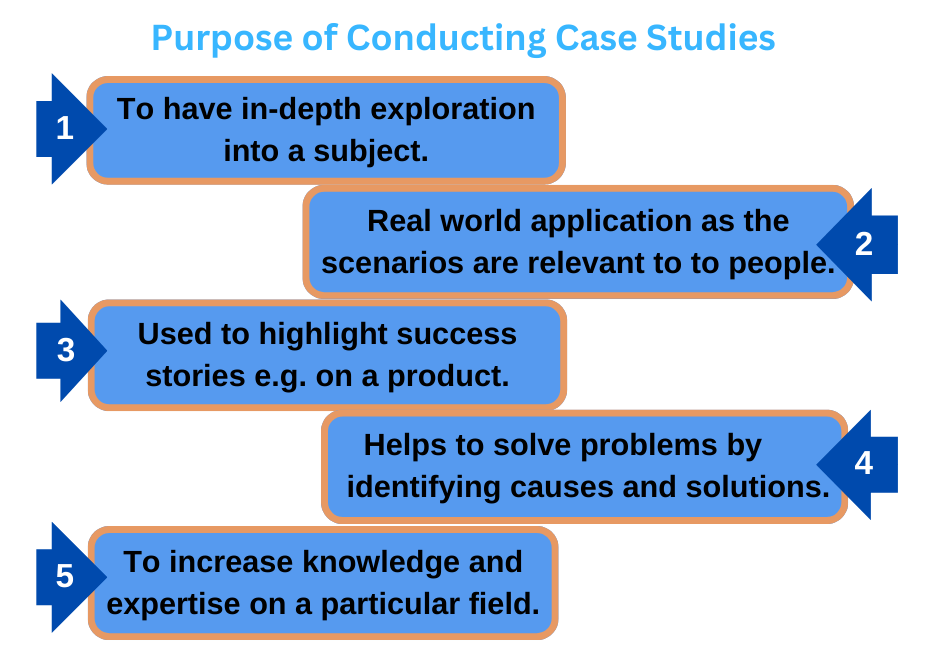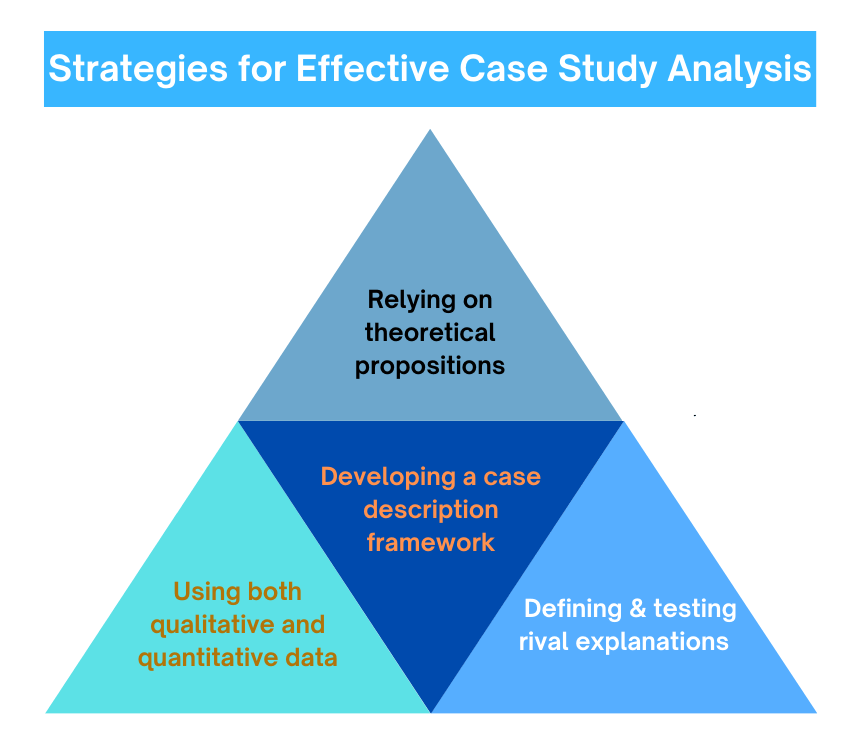What is Qualitative Case Study?
A qualitative case study is an approach to research which enables the assessment of the phenomenon within its context using various sources of data. If scholars decide to use multiple sources of information, they ensure that an issue is not explored through one lens only, but rather a variety of lenses which allows for multiple facets of the phenomenon to be revealed.
If you are in need of qualitative case study, we have professionals with extensive experience writing qualitative research papers and dissertations for years. Reach out today and get help with case study writing and experienced qualitative data analysis experts. Other types of qualitative study approaches that we write include phenomenology, ethnography, and narrative research. This article is a guide to qualitative case study, its pros and cons, when to use it, sources of data, and analysis and reporting of results.
When to Use Qualitative Case Study Approach
Case study design should be considered when:
- The focus of the study is to answer ‘why’ and ‘how’ questions.
- Researchers cannot manipulate the behavior of individuals involved in the study.
- Scholars want to cover contextual conditions because they believe the conditions are relevant to the phenomenon under study.
- There are no clear boundaries in between the context and phenomenon.
Advantages and Disadvantages of a Case Study
Advantages
Some of the advantages of qualitative case study approach include:
- It allows researchers gather detailed information that could not have been obtained if they used other research techniques.
- Researchers usually conduct few cases whenever a large sample of similar participants is not available.
Disadvantages
Some of the disadvantages of qualitative case study include:
- Data collected cannot necessarily be generalized to the wider population. This leads to information being gathered in broader areas and that is not important in qualitative case study.
- If there is only one researcher gathering information, it can lead to bias in collection and analysis of data, which can influence the research findings.
- Sometimes it becomes challenging for a researcher to define the causes or effects when using qualitative case study approach.
Determining the Type of Case Study
Once the researcher has determined the research question, it is essential for them to respond to the questions using a qualitative case study approach, and its determined boundaries then they will be able to consider the type of case study they will conduct. When one is selecting a specific type of case study technique, they should be guided by the overall purpose of the study.
Data Sources for a Case Study
In qualitative case study research, scholars use multiple data sources when conducting their research. The data sources may include, but are not limited to: personal interviews, documentation, archival records, physical artifacts, direct observations, and participant-observation.
Case study approach is unique when compared to other study approaches, because within each case study research, one can collect and incorporate quantitative survey data, which helps in reaching a complete understanding of the phenomenon being studied.
In case study, data from these multiple sources are then converged in the analysis process rather than handled individually. This convergence of multiple sources of data adds strength to the findings as the various strands of data are put together to promote a greater understanding of the case.
Though the opportunity to gather data from variety sources is very attractive because of the rigor that can be associated with this approach, there are dangers. One of the dangers is that the gathering of large amounts of data requires management and analysis.
Often, most of the researchers find themselves confused when analyzing large amount of information. Therefore, for researchers to have order when collecting data, they should use an electronic data base which will help in managing and organization of large amounts of information.
Analyzing a Case Study
In case studies, the collection and analysis of qualitative research data occurs in parallel ways. The type of analysis that researchers will be engaged in will depend on the type of case study. There are six techniques that student can use when analyzing a case study:
- Linking data to proposals,
- Pattern matching,
- Explanation building,
- Time series analysis,
- Logic models and
- Cross-case synthesis.
For new researchers, it is important to review various types of analysis and determine which approach they are most comfortable with. One significant practice during case study analysis is the return to the proposals; the reasons are, first, this practice leads to a focused analysis when the temptation is to analyze data outside the scope of research questions.
Second, exploring rival proposals an attempt to provide an alternate explanation of a phenomena.
Third, by engaging in this process the confidence in findings is increased as number of proposals and rival proposals are accepted and addressed or rejected. The risk associated with the analysis phase is that each source of data will be treated independently and findings reported separately. This is not the purpose of case study.
Rather, the researcher must ensure that the data are converged in an attempt to understand the overall case, not the various parts of the case, or the contributing factors that influence the case.
Reporting a Case Study
Due to the complex nature of qualitative case study approach, reporting a case study can be a difficult task for any researcher. It is sometimes challenging to report the findings in a brief way, and yet it is the responsibility of the researcher to change a complex phenomenon into a format that is readily understood by the reader. That is why you should hire qualitative data analysis services from experts to help you report findings and develop the qualitative case study research paper.
The main objective of reporting case study is that it helps scholars to describe their study in a comprehensive manner to enable the reader to feel as if they had been an active participant in the research and can determine whether or not the study findings could be useful to their own situation. It is sometimes significant for the researcher to describe the context within which the phenomenon is occurring as well as the actual phenomenon.
There are some suggested ways of reporting a case study like by approaching each proposition, by providing a chronical report, or by telling the reader a description or a narrative. When addressing the propositions, researchers should ensure that they address the research questions and the report remains focused.
For researchers to completely understand how to report qualitative case study, they compared and contrasted the findings against what can be found in written literature in order to situate the new data into preexisting data. Some methods used in reporting case study include: using theory building, comparative, linear, chronological, suspense, and unsequenced.
Summary
Qualitative case study research involves more than simply conducting research on a situation or a single individual. Case study approach has the ability to deal with simple to complex situations.
A case study enables a researcher to answer “how” and “why” type questions, while considering how a phenomenon is influenced by the context within which it is situated. Qualitative case study enables researchers to gather data from various sources and to converge the data to enable a better understanding of the case.
In case you are looking for experts to help you write a qualitative case study research, reach out to us at any time of your convenience as we are available 24/7. Do not worry about your deadline as we deliver tasks in short timeframe without compromising on quality. Our team is build up of professionals from various fields and we ensure an expert in your area of study takes your case study. Contact us now and get started.







